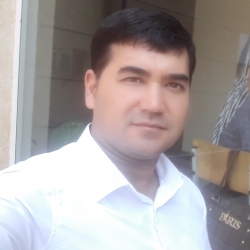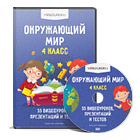On the relevance of the use of music in teaching children to read, write and mathematics.
Music (Greek μουσική, substantiated adjective from Greek μούσα - muse) is an art form. According to A. N. Sokhor (ME 3, 1976), this type "reflects reality and affects a person through meaningful and specially organized in height and time sound sequences, consisting mainly of tones." BDT (2013) defines music as “the art of sounds organized mainly in pitch and in time”. G. G. Eggebrecht, speaking of music "in the Western sense of the word", defines it as "the artistic organization of sound, which, in the sense of a natural and emotionally perceived sounding phenomenon, draws a picture of the world and soul, unconsciously and specifically grasped by the ear, and in sense of art [this sound] becomes the spiritual “language” of the material world, reflected and ordered (and therefore meaningful and meaningful) thanks to theoretical knowledge. " There are other encyclopedic definitions of music.
History of the term. The Greek word μουσική is a feminine adjective. The feminine gender is explained by its agreement with the feminine nouns of Old Greek. τέχνη (craft, professional activity of muses, cf. later "technique") or Greek. ἐπιστήμη (musical science, knowledge of the objects of the divine activity of the muses). Later, the adjective μουσική was substantiated; in ancient Rome, the word musica was noted both as an adjective (feminine, for example, in the phrase ars musica) and as a noun (music).
In the Russian literary language of the 19th century, the emphasis on the first syllable - "music" was fixed, although in Pushkin and (later) among the Kuchkists there is an archaic stress on the second syllable - "music".
In the Old Russian language, up to the 18th century, the word musikía (from the Greek μουσική) and derivatives, for example, the adjective “musikian”, were used in the same sense, as in the work of Nikolai Diletsky “The Grammar of Musikian Singing”. Occasionally, the adjective "Musikiy" is used for stylization in the archaic manner and in literary works of the 19th century, for example, "Musiky instruments" (that is, musical instruments) by N. V. Gogol in his essay "Life".
In the early stages of human development, music was almost exclusively applied. Hence the "canonicity" of the musical style, the small expression of the individual author's principle in it. In the professional work of mature musical cultures, music was gradually freed from direct dependence on words, dance, and ritual context. Starting from the late Middle Ages (XV century), and especially during the Renaissance in Europe, the forms of so-called autonomous music (according to G. Besseler, "presented", that is, intended exclusively for listening) developed for the first time; ... In modern times (starting from the Baroque era), the “applied” component continued to exist in the form of so-called program music, but in parallel the ideas of the “immanent essence” of music arose, one of the most popular in the 19th century - the idea of absolute music. In the work of the avant-garde artists of the 20th century, the "autonomous" vector of the history of music reached another climax - composers gave their works titles that exclude any associations with the usual genres and forms (for example, Webern's "Five Pieces for Orchestra", Boulez's "Structures", "Composition No. 2 ”Ustvolskaya, etc.), or the titles attributed to the works had a purely conditional character.
From ancient times to the present day, the art of music has been indisputably recognized by philosophers, musicians, teachers as an irreplaceable means of developing the spiritual world of man. No art compares to music for the power of emotional impact.
In ancient Greece, the art of music was assigned a leading role in education. The great Aristotle emphasized not only the pedagogical, but also the therapeutic value of music, believing that music, through catharsis, relieves heavy mental experiences.
Pythagoras believed that music, as a manifestation of cosmic harmony, can create in a person the same inner order and harmony as in space. It is known that music also has a healing effect on the human body. Even Hippocrates used the influence of music on patients in his medical practice.
In the 16th century, music began to be used in surgical operations.
The outstanding Czech teacher Jan Amos Komensky, the creator of a progressive and up-to-date pedagogical system, introduced the art of music into the number of compulsory school subjects.
In the 20th century, interest in the influence of music on the formation of the spiritual world and on the human psyche has increased dramatically throughout the world. More and more doctors, psychologists and teachers tried to convey to people the importance of music education for cultural life in general. The famous German composer, teacher, creator of children's musical instruments Karl Orff in 1924 founded a school in Munich, in which the education and upbringing of children was carried out according to the system of rhythmic movements (gymnastics, dance, pantomime), in combination with collective playing music.
The author of the book "Formation of Man through Music" V. Wunsch considers music as the central subject of teaching, which forms a person and allows him to gain spiritual experience.
Many teachers, creators of progressive musical techniques (B. Bartok, S. Suzuki, D. Kabalevsky and many others) talk about the need to teach all children music, regardless of their natural abilities. At present, in a number of countries (England, Canada, Japan, etc.), musical art is a compulsory subject not only in secondary schools, but also in higher educational institutions.
The results of modern research in the field of the influence of music on the child give rise to thinking about the need for a deeper introduction of musical art into the educational process of schools, especially primary ones. In younger schoolchildren, in contrast to other age periods, visual-figurative thinking and emotional-sensory perception of reality prevail, for them play activity remains relevant. The specificity of musical art, its artistic and figurative nature, meets the personal needs of a child of primary school age in the best possible way.
Currently, music is actively used in psychotherapeutic practice. VM Bekhterev spoke about the great importance of music in the aesthetic education of a child from the first days of his life, emphasizing also its therapeutic and hygienic value. In his work "Objective Psychology", he spoke about the influence of music on the activity of the heart, blood pressure, metabolism, work capacity and other functions and divided this influence into sthenic and asthenic.
Stenic - a positive effect of tone stimuli, harmony, melody and rhythm on the function of organs, asthenic - depression of respiration, metabolism, vasospasm. Music that has a sthenic effect has certain characteristics - tempo at the level of the heart rate, regular rhythm, the absence of too high sounds, dynamics at an average sound volume level, mainly harmonic cadences, etc.
Many works (W. Stilman 1990, J. White 1992, etc.) have demonstrated a positive effect of the perception of music on physiological and behavioral reactions, as well as on the emotional state of a person in situations that cause anxiety.
Music is not only perceived through emotions, but also capable of correcting them. T.Yu. Alekseeva, musical art is presented as a means of correcting emotional maladjustment in primary schoolchildren (1998). All this suggests that the perception of specially selected music by children gives a psychotherapeutic and general health effect, the need for which is also relevant in our time.
Music also has a positive effect on a child's intelligence.
Hungarian educator Zoltan Koday believed that "without music, a person cannot be complete - he is just a fragment." Back in 1951, he created the first school with an extended teaching of music. His schools have seen a dramatic increase in academic performance compared to other schools, despite the fact that the teaching of other subjects had to be reduced in favor of music lessons. This experiment was repeated in Switzerland (1988-1991) and also showed positive results. The results of this experiment are recorded in the work of E.V. Weber "Music makes school".
Since the perception of music is provided by both hemispheres, each of which regulates different functions (V.F. Konovalov, N.A. Otmakhova, 1983), the whole impression of music is provided by the integration of specialized cognitive and emotional processes occurring in both hemispheres. Consequently, the perception of music causes an increase in intercentral and interhemispheric interaction, i.e. integration of the brain. Moreover, the perception of music can occur both at the conscious and at the subconscious level, since the analysis of the frequency-time relationships of acoustic signals is carried out in both forms of perception (A.V. Toropova 1995).
In the works of G.Yu. Malyarenko, MV Khvatova (1993-1996) it is shown that the regular perception of specially selected music by children improves short-term memory, and also increases the indices of verbal and non-verbal intelligence. As a result of musical influence, the sensitivity of not only the auditory, but also the visual analyzer increases, in general the functions of the brain are optimized, the regulation of voluntary movements is improved, the processing of information is accelerated, and mental performance is increased (G.Yu. Malyarenko, M.V. Khvatova 1998).
Consequently, under the influence of prolonged sensory influx in the form of fragments of specially selected music, the psychophysiological characteristics of the brain improve, which means that the brain's ability to learn increases.
The use of music in teaching other school subjects contributes to the solution of another important problem. The close interaction of science and art allows children to develop the ability to have a holistic vision of the world around them. The combination of musical art with the fundamentals of science in primary school harmonizes abstract logical thinking with figurative thinking. This is especially important at the initial stage of learning, when the child is just entering learning activities.
There is no doubt that music heals body and soul. That music can be taught has yet to be proven. But let's not forget that music simply gives us inexplicable joy. Maybe because, in contact with it, we more or less consciously experience something from our spiritual existence ...
Literature.
Sokhor A.N.Music // Musical encyclopedia. T.3. M., 1976, stlb. 730-751.
Cherednichenko T.V., Chekhovich D.O.Music // Great Russian Encyclopedia. Volume 21.M., 2013, p. 403-406.
Kholopova V.N.Music as an art form: Textbook. 4th ed., Rev. SPb .: Lan, 2014. ISBN 978-5-8114-0334-9.
Are Brean, Geir Ulwe Skeie. Music and the brain. How music affects emotions, health and intelligence. = Are Brean, Geir Olve Skeie. Musikk og hjernen. Om musikkens magiske kraft og fantastiske virkning på hjernen .. - M .: Alpina Publisher, 2020. - ISBN 978-5-9614-2536-9.
Dahlhaus C., Eggebrecht H.H. Was ist Musik. Wilhelmshaven, 1985.208 SS.

















